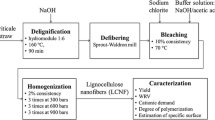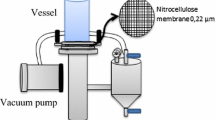Abstract
Although the positive effect that cellulose nanofibers (CNF) can have on paper strength is known, their effect on flocculation during papermaking is not well understood, and most relevant studies have been carried out in presence of only cationic starch. Flocculation is the key to ensuring retention of fibers, fines, and fillers, and furthermore floc properties have a great influence on paper quality. The aim of this research is to study the interactions between CNF and flocculants by assessing the effect of two types of CNF, from eucalyptus and corn, on the flocculation process induced by three different retention systems [a dual system, polyvinylamine (PVA), and cationic starch as reference]. The results showed that CNF interacted with the flocculants in different ways, affecting flocculation efficiency and floc properties. In general, addition of CNF increased floc stability and minimized overdosing effects. Moreover, presence of CNF increased floc size for given PVA dose; therefore, CNF addition could contribute to improve the wet end in the paper machine if combined with the optimal flocculant and dose.







Similar content being viewed by others
References
Ahola S, Myllytie P, Österberg M, Teerinen T, Laine J (2008) Effect of polymer adsorption on cellulose nanofibril water binding capacity and aggregation. BioResources 3:1315–1328. doi:10.1007/s10570-007-9167-3
Alcalá M, González I, Boufi S, Vilaseca F, Mutjé P (2013) All-cellulose composites from unbleached hardwood kraft pulp reinforced with nanofibrillated cellulose. Cellulose 20:2909–2921
Balea A, Merayo N, Fuente E, Delgado-Aguilar M, Mutje P, Blanco A, Negro C (2016a) Valorization of corn stalk by the production of cellulose nanofibers to improve recycled paper properties. BioResources 11:3416–3431
Balea A, Blanco A, Merayo N, Negro C (2016b) Effect of nanofibrillated cellulose to reduce linting on high filler-loaded recycled papers. Appita J 69:148–156
Blanco A, Fuente E, Negro C, Tijero J (2002) Flocculation monitoring: focused beam reflectance measurement as a measurement tool. Can J Chem Eng 80:734–740
Blanco A, Negro C, Fuente E, Tijero J (2005) Effect of shearing forces and flocculant overdose on filler flocculation mechanisms and floc properties. Ind Eng Chem Res 44:9105–9112
Blanco A, Fuente E, Monte MC, Cortes N, Negro C (2009) Polymeric branched flocculant effect on the flocculation process of pulp suspensions in the papermaking industry. Ind Eng Chem Res 48:4826–4836
Boufi S, Gandini A (2015) Triticale crop residue: a cheap material for high performance nanofibrillated cellulose. RSC Adv 5:3141–3151
Bremmell KE, Jameson GJ, Biggs S (1998) Kinetic polyelectrolyte adsorption at the solid/liquid interface interaction forces and stability. Colloids Surf 139:199–211
Cadotte M, Tellier ME, Blanco A, Fuente E, Van de Ven TGM, Paris J (2007) Flocculation, retention and drainage in papermaking: a comparative study of polymeric additives. Chem Eng J 85:240–248
Delgado-Aguilar M, González I, Pèlach MA, Fuente E, Negro C, Mutje P (2015a) Improvement of deinked old newspaper/old magazine pulp suspensions by means of nanofibrillated cellulose addition. Cellulose 22:789–802
Delgado-Aguilar M, Tarrés Q, Pèlach MA, Mutjé P, Fullana-i-Palmer P (2015b) Are cellulose nanofibers a solution for a more circular economy of paper products? Environ Sci Technol 49:12206–12213
Delgado-Aguilar M, Tarrés Q, Puig J, Boufi S, Blanco Á, Mutjé P (2015c) Enzymatic refining and cellulose nanofiber addition in papermaking processes from recycled and deinked slurries. BioResources 10:5730–5743
Delgado-Aguilar M, Tovar IG, Tarrés Q, Alcalá M, Pèlach MÀ, Mutjé P (2015d) Approaching a low-cost production of cellulose nanofibers for papermaking applications. BioResources 10:5345–5355
Dimic-Misic K, Hummel M, Paltakari J, Sixta H, Maloney T, Gane P (2015) From colloidal spheres to nanofibrils: extensional flow properties of mineral pigment and mixtures with micro and nanofibrils under progressive double layer suppression. J Colloid Interface Sci 446:31–43
Eklund D, Lindström T (1991) Paper chemistry: an introduction. DT Paper Science Publications, Grankulla
Eriksen O, Syverud K, Gregersen O (2008) The use of microfibrillated cellulose produced from kraft pulp as strength enhancer in TMP paper. Nord Pulp Pap Res J 23:299–304
Fan A, Turro NJ, Somasundaran P (2000) A study of dual polymer flocculation. Colloids Surf 162:141–148
Fuente E (2004) Mecanismos y cinética de los procesos de floculación en la fabricación de papel. Dissertation, Complutense University of Madrid
Future Markets, Inc. (2015) Nanocellulose patents and publications. Published in The Global Market for Nanocellulose, 32–34. http://www.futuremarketsinc.com/the-global-market-for-nanocellulose-to-2024/. Accessed 1 April 2015
Gonzalez I, Alcala M, Chinga-Carrasco G, Vilaseca F, Boufi S, Mutje P (2014) From paper to nanopaper: evolution of mechanical and physical properties. Cellulose 21:2599
González I, Boufi S, Pèlach MA, Alcalà M, Vilaseca F, Mutjé P (2012) Nanofibrillated cellulose as paper additive in eucalyptus pulps. BioResources 7:5167–5180
Habibi Y, Chanzy H, Vignon MR (2006) TEMPO-mediated surface oxidation of cellulose whiskers. Cellulose 13:679–687
Hassan ML, Hassan EA, Oksman KN (2011) Effect of pretreatment of bagasse fibers on the properties of chitosan/microfibrillated cellulose nanocomposites. J Mater Sci 46:1732–1740
Henriksson M, Berglund LA, Isaksson P, Lindström T, Nishino T (2008) Cellulose nanopaper structures of high toughness. Biomacromolecules 9:1579–1585
ISO 5351 (2010) Pulps: determination of limiting viscosity number in cupri-ethylene-diamine (CED). International Organization for Standardization, Geneva
Jonoobi M, Mathew AP, Oksman K (2012) Producing low-cost cellulose nanofiber from sludge as new source of raw materials. Ind Crops Prod 40:232–238
Lavoine N, Desloges I, Bras J (2014) Microfibrillated cellulose coatings as new release systems for active packaging. Carbohydr Polym 103:528–537. doi:10.1002/app.40106
Lindström T (2014) B3 bio-based materials: opportunities for challenge-led innovation. Horizon 2020 expert paper, pp 1–10
Liu DY, Sui GX, Bhattacharyya D (2014) Synthesis and characterisation of nanocellulose-based polyaniline conducting films. Compos Sci Technol 99:31–36
Marx-Figini M (1978) Significance of the intrinsic viscosity ratio of unsubstituted and nitrated cellulose in different solvents. Angew Makromol Chem 72:161–171
Moral A, Monte MC, Cabeza E, Blanco A (2010) Morphological characterization of pulps to control paper properties. Cellul Chem Technol 44:473–480
Nechyporchuk O, Naceur Belgacem M, Bras J (2016) Production of cellulose nanofibrils: a review of recent advances. Ind Crops Prod 93:2–25
Norell M, Johansson K, Persson M (1999) Papermaking science and technology, vol 4. Tappi Press, Helsinki
Petroudy SRD, Syverud K, Chinga-Carrasco G, Ghasemain A, Resalati H (2014) Effects of bagasse microfibrillated cellulose and cationic polyacrylamide on key properties of bagasse paper. Carbohydr Polym 99:311–318. doi:10.1016/j.carbpol.2013.07.073
Pruden B (2005) The effect of fines on paper properties. Paper Tech 46:19–26
Saito T, Kimura S, Nishiyama Y, Isogai A (2007) Cellulose nanofibers prepared by TEMPO-mediated oxidation of native cellulose. Biomacromolecules 8:2485–2491
Song HN, Ankerfors M, Hoc M, Lindstrom T (2010) Reduction of the linting and dusting propensity of newspaper using starch and microfibrillated cellulose. Nord Pulp Paper Res J 25:495
Stén M (1999) Papermaking chemistry, papermaking science and technology, vol 4. Tappi Press, Helsinki
Taipale T, Osterberg M, Nykanen A, Ruokolainen J, Laine J (2010) Effect of microfibrillated cellulose and fines on the drainage of kraft pulp suspension and paper strength. Cellulose 17:1005–1020
Acknowledgements
The authors wish to thank the Economy and Competitiveness Ministry of Spain for support of this project with reference CTQ2012-36868-C02-01.
Author information
Authors and Affiliations
Corresponding author
Electronic supplementary material
Below is the link to the electronic supplementary material.
Rights and permissions
About this article
Cite this article
Merayo, N., Balea, A., de la Fuente, E. et al. Interactions between cellulose nanofibers and retention systems in flocculation of recycled fibers. Cellulose 24, 677–692 (2017). https://doi.org/10.1007/s10570-016-1138-0
Received:
Accepted:
Published:
Issue Date:
DOI: https://doi.org/10.1007/s10570-016-1138-0




